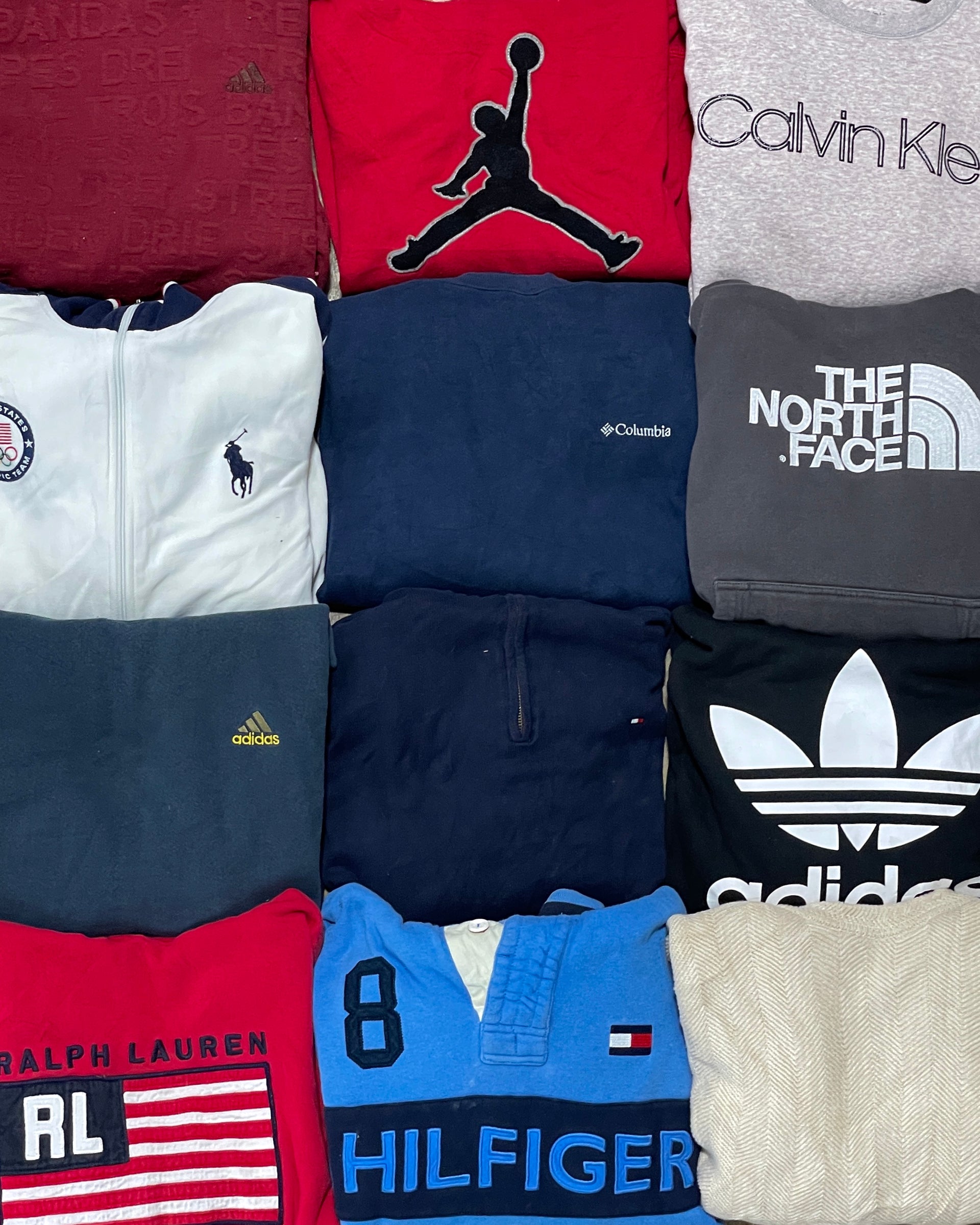Branded Clothing Essentials: Understanding the Fabric Behind the Fashion
Branded Clothing Essentials: Understanding the Fabric Behind the Fashion
Blog Article
The Importance of Sustainable Clothing: How It Impacts the Environment and Your Closet
Lasting garments is significantly acknowledged for its important duty in minimizing the ecological influence of the fast fashion business. By focusing on eco-friendly materials and honest manufacturing approaches, it resolves pushing environmental issues. This change not just profits the world however likewise influences customer options, resulting in an extra thoughtful method to closet management. Recognizing these dynamics raises crucial questions about style's future and personal obligation in shaping it.
The Ecological Footprint of Fast Fashion

Benefits of Sustainable Materials
Lasting products supply significant advantages, specifically via environmentally friendly material choices that minimize environmental harm. These products additionally show durability and longevity, reducing the demand for frequent substitutes. As a result, they contribute to a more sustainable apparel industry and advertise accountable consumer actions.
Eco-Friendly Textile Options
While the style sector has long been linked with rapid patterns and environmental harm, the surge of environment-friendly textile selections offers a transformative chance. Sustainable materials such as natural cotton, hemp, and Tencel have obtained appeal as a result of their lower environmental impact. These textiles are usually created without hazardous chemicals and call for less water, lowering their carbon footprint - Branded Clothing. Furthermore, many green fabrics are naturally degradable, adding to a round economy by lessening waste. Choosing sustainable products not just sustains environmentally accountable practices but additionally promotes much healthier communities. As consumers come to be much more knowledgeable about their acquiring power, the demand for eco-friendly fabrics motivates brands to innovate and take on even more lasting production approaches, ultimately profiting the planet and future generations
Durability and Long Life Advantages
Several consumers are significantly acknowledging the durability and longevity benefits of lasting products in their apparel choices. Unlike standard materials, sustainable materials such as natural cotton, hemp, and recycled polyester are crafted to hold up against damage, causing garments that last longer. This decreased frequency of replacement not only saves consumers money in time but also lessens waste produced by quick fashion. In enhancement, sustainable garments typically utilizes eco-friendly manufacturing techniques that improve material strength, adding to a decrease in the overall carbon footprint. By spending in long lasting garments, customers can cultivate a more lasting closet while appreciating top notch items that preserve their aesthetic and capability over time. Resilience and durability stand as key advantages of selecting sustainable products.
Minimizing Waste Via Lasting Practices
Decreasing waste in the fashion sector can be accomplished through cutting-edge methods such as upcycling and repurposing materials. In addition, adopting minimalist closet techniques urges consumers to focus on quality over amount, ultimately lowering garments intake. Together, these strategies contribute significantly to a much more sustainable apparel design.
Upcycling and Repurposing Products
Upcycling and repurposing materials have actually emerged as innovative strategies in the fashion business, changing discarded textiles right into useful brand-new products. This approach not only minimizes waste yet additionally urges imagination and individuality in clothes style. By taking old garments and materials, developers can produce one-of-a-kind pieces that show personal style while decreasing the need for new resources. In addition, upcycling commonly requires less energy and water contrasted to traditional production processes, significantly reducing the ecological impact of fashion. As consumers become a lot more mindful of sustainability, the popularity of upcycled clothes proceeds to climb, promoting a circular economic climate. Ultimately, these practices add to an extra lasting future, where style prioritizes environmental health and wellness over fast production and usage.

Minimalist Wardrobe Strategies
As individuals progressively seek to lessen their environmental effect, embracing minimalist wardrobe methods has actually acquired traction as an effective approach to sustainable style. These approaches stress top quality over quantity, motivating customers to curate a smaller sized collection of functional, long lasting garments. By concentrating on ageless pieces that can be mixed and matched, people can reduce the regularity of acquisitions and inevitably lower waste.Additionally, minimalism advertises conscious usage, prompting buyers to assess the ethical and environmental ramifications of their choices. This approach not just promotes a more sustainable way of life yet likewise simplifies everyday decision-making concerning attire. As individuals welcome minimalist concepts, they contribute to a fashion society that values sustainability and accountable consumerism, ultimately resulting in a much more eco-conscious culture.
The Function of Honest Labor in Sustainable Style
While several consumers are increasingly knowledgeable about the ecological effects of their clothes options, the relevance of moral labor methods in sustainable fashion can not be overlooked. Honest labor includes fair incomes, secure working problems, and regard for employees' legal rights, creating the backbone of accountable style production. Brand names that prioritize honest labor not just uplift neighborhoods but likewise established a standard for responsibility in the industry.Moreover, the assimilation of ethical methods cultivates transparency, allowing customers to make educated selections about their purchases. This technique contrasts sharply with fast style's unscrupulous labor models, which typically focus on revenue over individuals. By supporting firms dedicated to honest labor, consumers add to a system that values human self-respect along with environmental sustainability. Subsequently, moral labor is not merely an add-on; it is vital to the wider objective of lasting style, guaranteeing that the mission for eco-friendliness does not come with the expenditure of civils rights.
The Effect of Sustainable Clothing on Carbon Emissions
Lasting garments has the possible to considerably minimize carbon discharges connected with the fashion sector. Traditional garment manufacturing adds significantly to greenhouse gas emissions, mainly because of energy-intensive manufacturing processes and her explanation making use of non-renewable sources. In contrast, lasting style concentrates on environment-friendly materials, such as organic cotton or recycled fibers, which often require much less energy to produce.Moreover, sustainable brands often tend to adopt extra effective manufacturing techniques, lessening waste and lowering total emissions. By prioritizing resilience and classic style, lasting apparel urges consumers to acquire less regularly, more lowering the carbon footprint related to overconsumption.Additionally, several lasting brand names are dedicated to transparency in their supply chains, allowing consumers to make informed selections that align with their values. Eventually, changing in the direction of sustainable clothes can cause a substantial decrease in carbon exhausts, adding to a much healthier world and an extra lasting future for the fashion market.
Sustaining Neighborhood Economic Climates With Lasting Choices
The change towards sustainable clothing not only addresses ecological problems but also substantially benefits local economic climates. By picking lasting fashion, consumers usually support regional craftsmens and small companies, boosting community durability. These business commonly operate a smaller sized range, prioritizing workmanship and ethical practices over mass production.Investing in locally made lasting clothing fosters task production and stimulates economic development within neighborhoods. As customers come to be much more knowledgeable about the environmental influence of their purchases, they significantly look for out items that show their values. This need encourages regional producers to adopt sustainable techniques, adding to a round economy.Moreover, sustaining regional organizations decreases transportation exhausts, lining up with eco-conscious customer behavior. why not check here The interconnectedness of sustainable apparel and regional economic situations highlights the crucial duty that individual choices play in advertising both environmental and financial health and wellness. By fostering these local links, areas can prosper while also working in the direction of a more sustainable future.
Transforming Your Closet: Tips for a Sustainable Closet
As people seek to decrease their ecological impact, changing a closet right into a sustainable wardrobe becomes a crucial action. One reliable method is to evaluate existing clothing, maintaining just items that are used consistently and that align with sustainability objectives. Focusing on top quality over amount is important; purchasing durable items from green brands can significantly lower waste.Additionally, including second-hand items can revive a closet while decreasing environmental damage. Organizing apparel swaps with pals or contributing unused things can further promote sustainability.When shopping, individuals ought to look for products that are organic, recycled, or biodegradable, and prevent fast style sellers - Branded Clothing. Practicing conscious usage by thoughtfully considering each acquisition can contribute to a more sustainable way of living. By executing these ideas, one can create a wardrobe that shows personal design while supporting ecological stewardship
Often Asked Inquiries
Just How Can I Identify Lasting Clothing Brands?
To recognize lasting clothing brand names, one must research products utilized, look for certifications like Fair Profession, and take a look at the brand's transparency concerning their manufacturing processes, labor techniques, and view it ecological effect, making sure environment-friendly and ethical methods are prioritized.
What Are the Costs Connected With Sustainable Style?
The expenses related to sustainable style can vary significantly. Greater manufacturing expenditures, moral sourcing, and environment-friendly materials commonly bring about increased retail prices, which may hinder some consumers while attracting eco conscious buyers.
Can Lasting Garments Be Fashionable and elegant?
Lasting clothing can without a doubt be trendy and stylish. Developers significantly prioritize ingenious products and ethical manufacturing techniques, verifying that style and sustainability can exist side-by-side. Consumers currently have diverse alternatives that blend visual appeals with environmental consciousness.
How Does Washing Garments Affect Their Sustainability?
Washing clothes greatly effects sustainability by consuming water and energy, contributing to contamination, and triggering microplastic release. Frequent washing can degrade fabrics, shortening their life-span and enhancing the demand for replacements, ultimately intensifying ecological problems.
What Is the Lifespan of Sustainable Clothing Contrasted to Fast Style?
The life expectancy of sustainable garments typically surpasses that of rapid style items, usually long-term a number of years due to top quality products and craftsmanship. In contrast, quick fashion garments might degrade promptly, necessitating even more frequent replacements. Lasting clothes is progressively recognized for its essential role in minimizing the ecological effect of the rapid fashion sector. While several consumers are increasingly conscious of the environmental repercussions of their clothes choices, the relevance of ethical labor techniques in sustainable fashion can not be ignored. Branded Clothing. Sustainable garments has the possible to considerably lower carbon discharges connected with the fashion industry. In comparison, sustainable style focuses on environment-friendly products, such as organic cotton or recycled fibers, which frequently need less power to produce.Moreover, lasting brand names have a tendency to adopt extra effective manufacturing methods, decreasing waste and reducing general emissions. By focusing on longevity and classic design, lasting clothes encourages consumers to get much less frequently, additional reducing the carbon footprint associated with overconsumption.Additionally, numerous lasting brand names are devoted to transparency in their supply chains, making it possible for consumers to make educated selections that straighten with their worths
Report this page